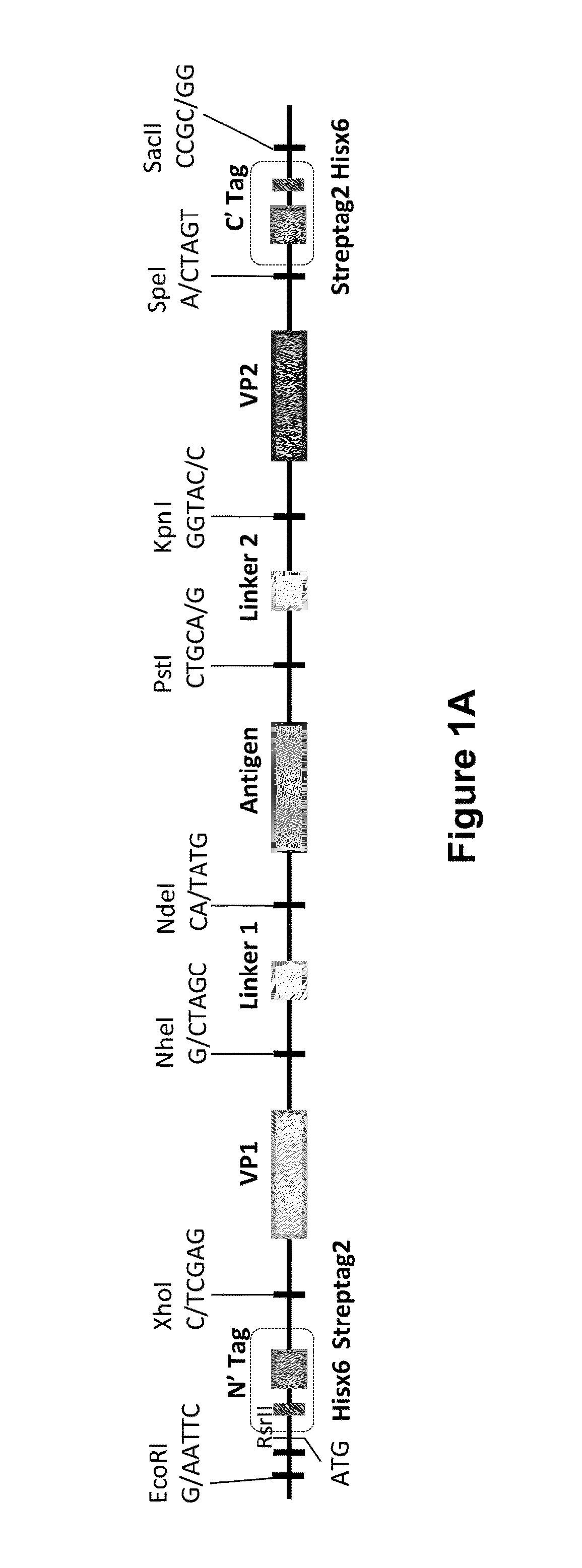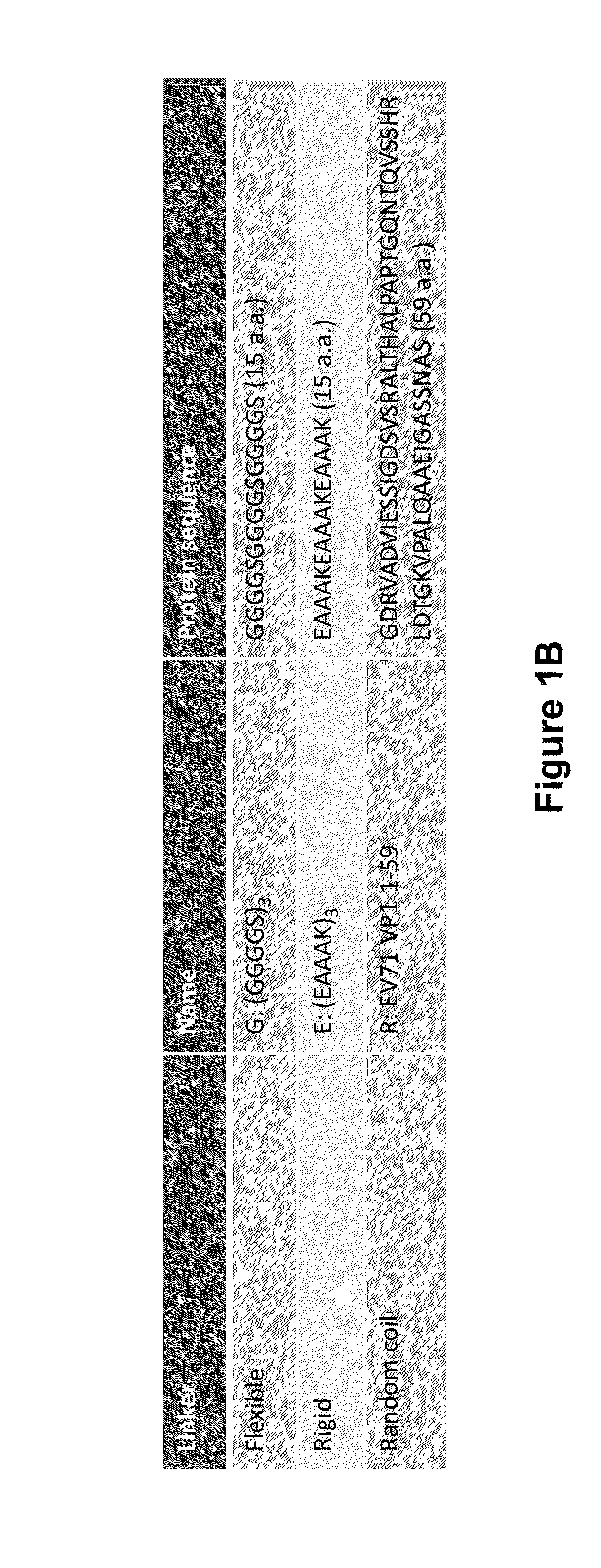Virus-like particle vaccines
a technology of viruslike particles and vaccines, applied in the field of viruses, can solve the problems of increasing production speed, scalability, cost-effectiveness, and reducing the effect of immune response, and facilitating antigen folding, so as to improve or optimize the immune response of subjects
- Summary
- Abstract
- Description
- Claims
- Application Information
AI Technical Summary
Benefits of technology
Problems solved by technology
Method used
Image
Examples
example 1
VLP Template Construction
[0189]The VLP template (FIG. 1) was synthesized by GenScript in the plasmid pUC57 using a codon optimization specific for yeast. The fragment of the VLP template was subcloned into the yeast expression plasmid vector pPICZ A using EcoRI (5′-end) and SacII (3′-end) sites and expression was regulated using the methanol inducible AOX1 promoter. Sequences encoding the N-terminal virus structural protein (VP1) were cloned into the template using a XhoI+NheI pair of restriction sites at the 5′ and 3′ ends. Sequences encoding the N-terminal linker (Linker 1) were cloned into the template using a NheI+NdeI pair of restriction sites at the 5′ and 3′ ends. Sequences encoding the antigen were cloned into the template using a NdeI+PstI pair of restriction sites at the 5′ and 3′ ends. Sequences encoding the C-terminal linker (Linker 2) were cloned into the template using a PstI+KpnI pair of restriction sites at the 5′ and 3′ ends. Sequences encoding the C-terminal viral ...
example 1a
S-VP1-S Construction
[0192]The coding region of S-VP1-S (see FIG. 9) was synthesized by GenScript in the plasmid pUC57, with codon optimization for E. coli. The fragment of the VLP template was subcloned into plasmid vector pCRT7NT (Invitrogen) by PCR and expression was regulated by the IPTG-inducible T7 promoter. This technique was used to produce the recombinant protein of Example 1-109 in the above table.
example 2
Yeast Transformation
[0193]Recombinant plasmid DNA was linearized with PmeI (NEB) and clean-up by NucleoSpin® (Macherey-Nagel) for subsequent transformation. 5-10 μg of linearized plasmid DNA was transformed into Pichia pastoris host strain GS115 by the lithium chloride method according to the instruction manual of the EasySelect™Pichia Expression kit (Invitrogen). The transformants were plated on YPDS plates (1% (w / v) yeast extract, 2% (w / v) peptone, 2% (w / v) dextrose, and 1.5% (w / v) agar) containing 50 μg / ml Zeocin (Invivogen). Zeocin-resistant clones were selected and the insertion was confirmed by colony PCR using the following primers: 5′ AOX1 primer: 5″-GACTGGTTCCAATTGACAAGC-3″ (SEQ ID NO: 32); 3′ AOX1 primer: 5″-GCAAATGGCATTCTGACATCC-3″ (SEQ ID NO: 33).
PUM
| Property | Measurement | Unit |
|---|---|---|
| Length | aaaaa | aaaaa |
| Immunogenicity | aaaaa | aaaaa |
Abstract
Description
Claims
Application Information
 Login to View More
Login to View More - R&D
- Intellectual Property
- Life Sciences
- Materials
- Tech Scout
- Unparalleled Data Quality
- Higher Quality Content
- 60% Fewer Hallucinations
Browse by: Latest US Patents, China's latest patents, Technical Efficacy Thesaurus, Application Domain, Technology Topic, Popular Technical Reports.
© 2025 PatSnap. All rights reserved.Legal|Privacy policy|Modern Slavery Act Transparency Statement|Sitemap|About US| Contact US: help@patsnap.com



